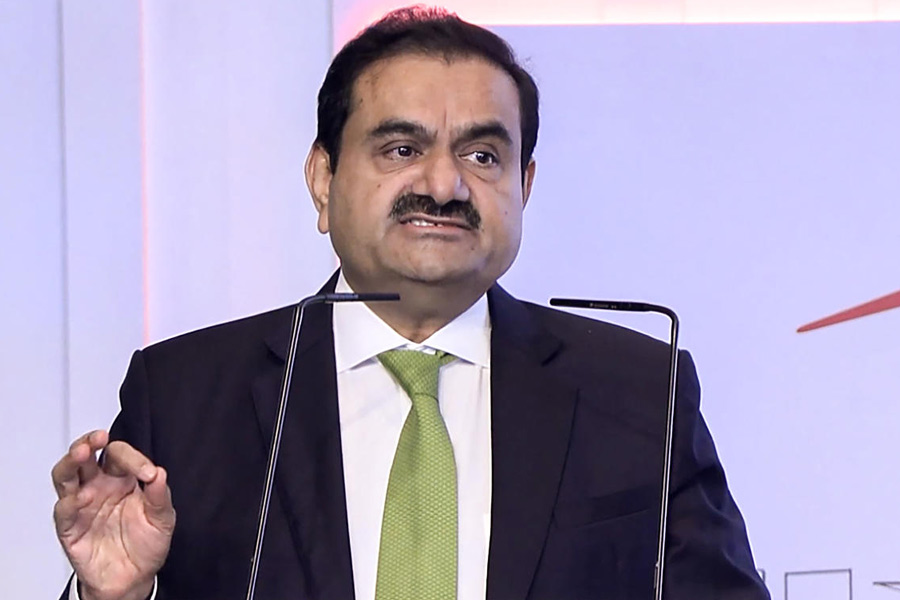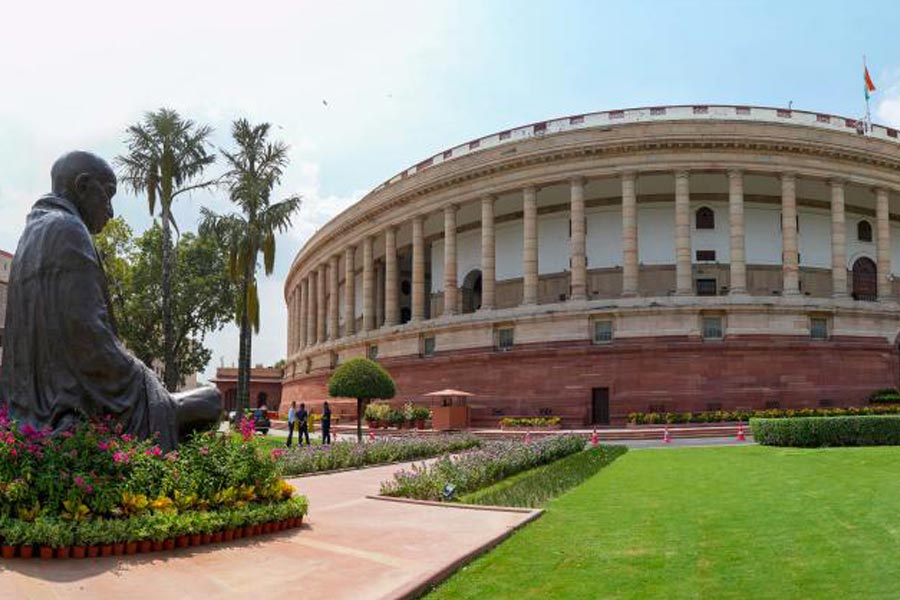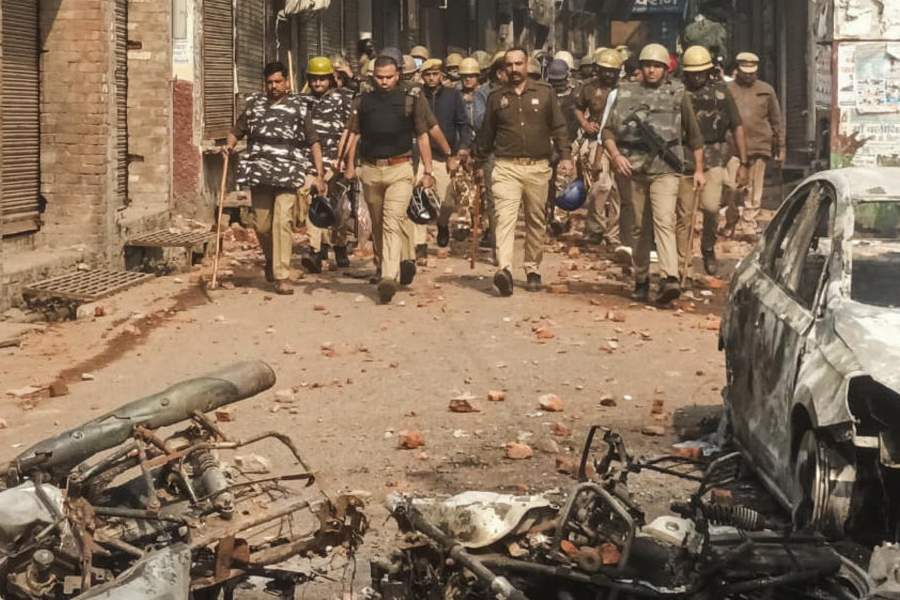It’s been a year since the government took the surprise steps of abrogating Article 370 and bifurcating the state of Jammu & Kashmir. We know about the many external developments since then but fathoming the reaction in the valley is trickier. The government argues that the reduction of violence and terror incidents is a sure sign that the people have come to accept what happened on August 5 last year and that it is time to move on. But there are others who insist that the people remain sullen, angry and humiliated.
There is no real barometer to gauge the situation in J&K as the state is under a form of lockdown with restrictions on communications, media and politics. Also, the security forces are very visible. There is no real normalcy and tourism and the lucrative apple crop have taken colossal hits. The facts on the ground are that there is a reduction in violence, but this is more a consequence of the state’s muscular policy and the tight security grid.
Given the restrictions in place, it is difficult to comprehend the mood in the Kashmir Valley. There is undoubtedly resignation, those who talk say, sotto voce, that nobody wants to risk life and limb in confronting the state. Attitudes have hardened and there is anger with the judiciary which was once seen as being neutral. There is bewilderment that the government’s anger with Pakistan is now focused on the ordinary Kashmiri. As for the younger people, we simply do not know. There is no visible leadership with the strong crackdown creating only two segments – with us or against us.
What leadership there is has presumably gone underground but the question is who do we engage with? The Hurriyat is strife-ridden and is becoming less of a force. However, it is also equally valid to add that the government’s plans for the future have not worked in the intended manner.
The government’s attempt to create a new tier of politicians stumbled if the panchayat elections held in December 2019 are to be any gauge. Those elections saw no polling in a full two-thirds of the seats - a third had no candidate and another third, with just a single candidate, went uncontested. There are lessons here – that anger and fear of the militants still holds. It is also entirely possible that some of those who won (uncontested or otherwise) would have arrived at a compact with the militants. Consequently, funds generously allocated for the panchayats could end up in the wrong hands and could well fuel exactly that which was to be put down. The next tier of political leadership has not emerged and, even if they surfaced, the charges of being quislings would be immediate.
Politically, there is a vacuum. The Abdullahs have been released whereas Mehbooba Mufti remains under house arrest. Though there are dark hints that there is a deal, there are also reports of the opposite – that a worried government released the Abdullah’s to ensure that the cadre-based National Conference (NC) did not wither away and leave a vacuum. After all, it was the NC and the Congress which were the frontline against the Jamaat-e-Islami in the 1980s. Simply put, the only acceptable forces that matter remain the NC and the PDP with the Congress in small pockets. The BJP dare not show its head, at least in the Valley.
The next phase of the government’s plans is to gerrymander constituencies, but it is not all going well in Jammu. The Dogras are uncomfortable with the revocation of Article 35A which allowed the state legislature to define the permanent residents of Jammu and Kashmir. Article 35A was revoked at the same time as Article 370 and the Dogras are concerned that its abrogation could result in ingress from the outside and lead to a loss of access to employment. Even in Ladakh there is similar concern that the withdrawal of domicile laws and its impact on job will be at the expense of the Ladakhi.
Internationally, there was a string of adverse reactions from various countries, multilateral agencies, and regional groupings. However, for the moment, Covid-19 has secured the government some breathing space.
Across our all-important Western border, as if to earn their boy scout merit badges from the FATF or with an eye on Afghanistan, the ISI has restrained itself. Whether this is temporary, or a new norm is unclear. However, even if it is a new norm, it would be very transient and will work only if it serves Gen Bajwa’s and the Army’s purposes. The LeT is preoccupied with Afghanistan but the ISI’s bag of tricks remains and sooner rather than later there will be a new entity, possibly one with a greater indigenous flavour. If that fails, the ISI will turn to one masquerading as an international jihadi organisation to distance Pakistan from charges of using its citizens.
On the political front, Prime Minister Imran Khan convened a special session of Parliament and called India’s move ‘unconstitutional’. It also downgraded diplomatic ties with India and mounted an international campaign to “expose Indian human rights violations” in J&K. Imran also penned an op-ed in the New York Times which called the abrogation of Art 370 “illegal”. Pakistan as well sought to move the UN Security Council to hold a discussion on Kashmir but, failing to secure any purchase, it was left to China to step in and seek a consultation. While nothing emanated from this move, the fact is that Kashmir was discussed at the UN after a long time.
One of the unintended consequences of the abrogation of Art 370 is said to be in our recent tensions with the Chinese in Ladakh. There are reports that the focus on Aksai Chin, both on the floor of Parliament and in our new maps of Ladakh, was a factor, if not the factor, in the recent tensions. While the jury is still out, there are reports that the build up across the LAC began a month after the abrogation of Art 370. Initially, China called the move “unacceptable” and said that it would transgress China’s sovereignty, something they lay great stress on as is evident in their territorial claims in other theatres. In October 2019, during Imran’s visit to Beijing, the two issued a joint statement and mentioned the UNSC resolutions. China has, in a sense, now made itself a party to the conflict.
In other parts of the world, Kashmir attracted attention. In the Muslim world, Turkey was very strident. India retaliated by cancelling a $ 2.3-billion contract awarded to a Turkish firm to build vessels for the Navy and went on to hold meetings with Turkey’s rivals - Cyprus, Armenia and Greece. Malaysia, too, was equally vociferous. Prime Minister Mahathir Mohammad commented at the UN that ‘the country has been invaded and occupied’. Mahathir also revealed that he had suggested to Modi that the solution lay in “negotiations” not “invasion”.
However, much of this is also driven by the fact that Turkey and Malaysia are seeking to champion the Muslim cause and build a Muslim bloc in the non-Arab world. Iran’s supreme religious leader, Ali Khamenei, called for a “just policy towards the noble people of Kashmir”. The reactions from the rest of the Muslim world were more manageable though other actions, such as the anti-Muslim comments, riled the Arab countries, and this could find itself aired in the Organisation of Islamic Cooperation.
US President Donald Trump offered to mediate between India and Pakistan and bizarrely suggested that Prime Minister Modi had asked him to do so. While the US has called it “strictly an internal matter”, it hasn’t been all good – the US has said it was “closely observing” J&K and also expressed concern over the detentions and rights of those affected. US senators and congressmen have been sharply critical, speaking on issues like “rights of Kashmiris to protest peacefully” and on human rights. There is some degree of bi-partisan support.
While the UK has attempted to avoid criticising India, British Parliamentarians and even the Labour party, heavily dependent on support from the Pakistan-origin community, called for “international intervention” and a “referendum” but later backtracked and issued a clarification that J&K remained a bilateral issue between India and Pakistan. The European Union demanded that restrictions be lifted and called for a dialogue between India and Pakistan. The government invited EU parliamentarians, mostly right-wing politicians, to visit Srinagar to study the situation. The visit turned into a PR disaster and the EU distanced itself from the visit. Russia viewed the decision as falling within the framework of the Indian Constitution. At the UNSC, Russia supported India’s position.
In the early part of this year, there were indications that Kashmir has effectively been put back on the international agenda and this could undermine India’s position that Kashmir is an internal matter. The world’s preoccupation with the pandemic has provided some breathing space but India’s image took a beating in the international press, particularly in the US media. The New York Times, The Washington Post and The Wall Street Journal have been scathing of not only the abrogation but also measures like the Citizen (Amendment) Act.
While the revocation of Article 370 is a done deal, the healing process to address the sense of humiliation and hurt has not begun. There must be an attempt to talk to the people; to win hearts and minds; to withdraw the harsh restrictions and permit political participation. Parallelly, the Centre needs to recognise the unique character of the state within the limits set by the Indian constitution. The first of these steps would be to restore J&K to a full-fledged state and to mitigate the impact of the withdrawal of Article 35A by moving the former state under provisions exercised by other states under the sixth schedule or Article 371.
Once the restrictions are lifted, there is bound to be a reaction with an increase in protests and demonstrations (and even militancy) but this is to be expected and is the essence of a democracy. There is no other way but to heed Prime Minister Atal Bihari Vajpayee’s famous call to be guided by the three principles of insaniyat, jamhooriyat and kashmiriyat else we will be seen as an occupation force. Our window is small, and the Israeli model will simply not work for us.
The author is a former special secretary R&AW and is currently associated with the Takshashila Institution











